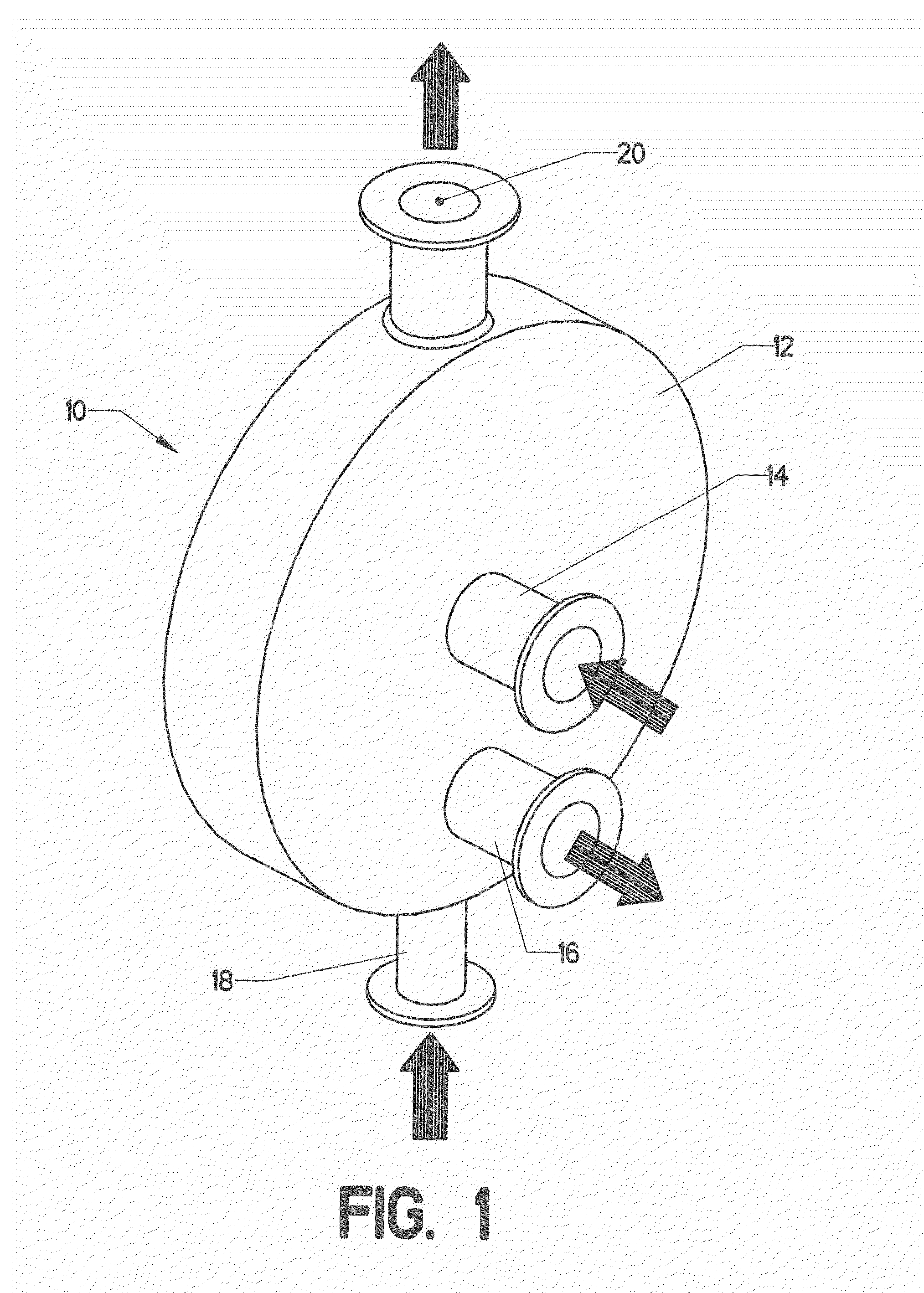Oil free falling film heat exchanger
a heat exchanger and film heat exchange technology, applied in the direction of heat exchange apparatus, trickle coolers, stationary conduit assemblies, etc., can solve the problems of inefficient use of air as a secondary fluid, limited heat carrying capacity of air, and substantial frictional losses over such a distance, so as to reduce gas charges and heat exchange rates , the effect of increasing the effective surface area
- Summary
- Abstract
- Description
- Claims
- Application Information
AI Technical Summary
Benefits of technology
Problems solved by technology
Method used
Image
Examples
Embodiment Construction
[0113]A plate-type heat exchanger transfers heat from a secondary fluid to a primary fluid across a plate which separates the two. It is preferable to completely cover the primary fluid side of the plate with refrigerant. As discussed previously, this can be done in two ways. The first way is to flood the primary side of the plate with a “bath” of boiling refrigerant. The second way is to apply a thin “falling film” of refrigerant to the primary fluid side. The two methods can be practiced using many of the same heat exchanger components. However, they will be discussed in separate sections in order to prevent confusion. The flooded type is discussed first and the falling film type is discussed second.
1. Flooded Type Heat Exchanger
[0114]FIG. 1 shows a simplified version of a plate-type heat exchanger. Heat exchanger 10 includes many components enclosed within pressure vessel 12. The heat exchanger is configured to transfer heat between a primary fluid and a secondary fluid. The prim...
PUM
 Login to View More
Login to View More Abstract
Description
Claims
Application Information
 Login to View More
Login to View More - R&D
- Intellectual Property
- Life Sciences
- Materials
- Tech Scout
- Unparalleled Data Quality
- Higher Quality Content
- 60% Fewer Hallucinations
Browse by: Latest US Patents, China's latest patents, Technical Efficacy Thesaurus, Application Domain, Technology Topic, Popular Technical Reports.
© 2025 PatSnap. All rights reserved.Legal|Privacy policy|Modern Slavery Act Transparency Statement|Sitemap|About US| Contact US: help@patsnap.com



